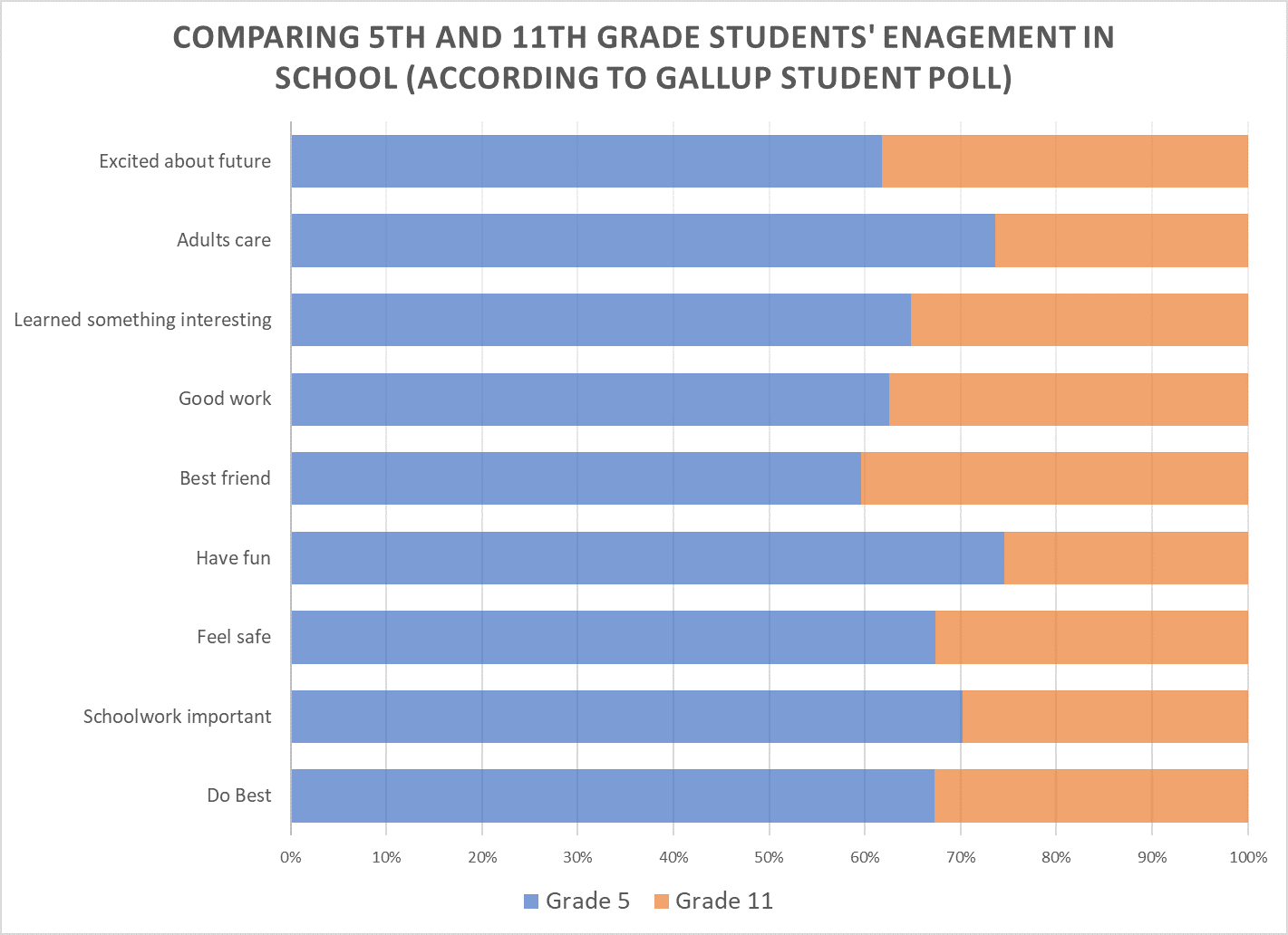Student engagement dramatically falls from middle school to high school. According to a massive survey of US and Canadian students, Gallup found almost ‘three quarters of all surveyed fifth-grade students’ are engaged, while only ‘one-third of surveyed students in 10th, 11th and 12th grades are engaged”.
Yes, high schoolers are growing outside of the classroom, participating in sports, making friendships (many of them lifelong), and exploring interests, so school seems unappealing, too structured. But ideally (in my opinion), the percentage of engaged students remains somewhat stable from middle school to high school.
A small disclaimer, the high school model might not work for everyone and does not have to. Students who work towards a career outside of school or align themselves with a skilled trade might never get engaged in high school. For example, a programmer/ hacker who does a lot of coding in his or her free time still secures a future career (moreover, the standard high school program still lags what is offered in extracurricular activities related to programming). Another example are students who are working while in high school; hopefully they get the necessary skills for future growth (ideally with the help of a mentor).
Why are students become so disengaged when learning becomes so critical to their future success, when they must make mature decisions of what skills they need and how to acquire and them?
Something I have been proposing for years: teenage students get self and socially aware. They are impressionable and after high school make one of the biggest decisions of their life. (In the context of Skills Based Approach, during the planning stage, students identify an evolving set of skills and an action plan to acquire them. Self-discovery might come from a game, test, simulation, etc.)
There is considerable growth in resources to identify personal learning and career tracks. One type is a game or VR to simulate actual experiences. Knack is making considerable headway in this area. Another type is to collect data/content from your everyday experiences (big data) and then crunch out the analytics. A teenager using FitBit devices might identify behaviors or tendencies worth developing. Or a teenager might analyze their posts in social media to identify personality traits (FiveLabs).
Gallup identifies six ways to keep kids excited about school: create hope; foster talent; care a lot; recognize creative teachers and teaching; have fun; and model engagement. Self-discovery is one step forward. Personalized, adaptive learning is another step forward. Competency based learning removes a ‘seat time’ contingency and allows for underperforming students to get more help, average students choose how much time to spend learning, and overachieving students to move on when ready. Games, VR, and experiential learning is a leap forward. This is what is going to make learning fun. (Skills Label™ is a display to express learning expectations and outcome for any discrete task. Teachers can create labels for each of these learning types.)
These poor engagement numbers bother me as I feel lifelong learning is the best way to achieve (career) happiness. High school is one time in a person’s life dedicated to learning, exploration, and personal and social growth. With such an investment, seems wasteful to have two-thirds of students not engaged at school. Skills Culture is a mindset where students are motivated to learn and apply skills, perhaps one lens to help improve these low engagement numbers. With a Skills Culture:
- A Growth Mindset. Students are motivated. Most students feel they can learn skills if they put in the necessary time and effort.
- Personalized Learning. There is required learning. But otherwise, students work on their own evolving skill set. Students learn their own way.
- Experiential Learning. Learn to practice and apply skills. Students get motivated by actually applying their knowledge.
